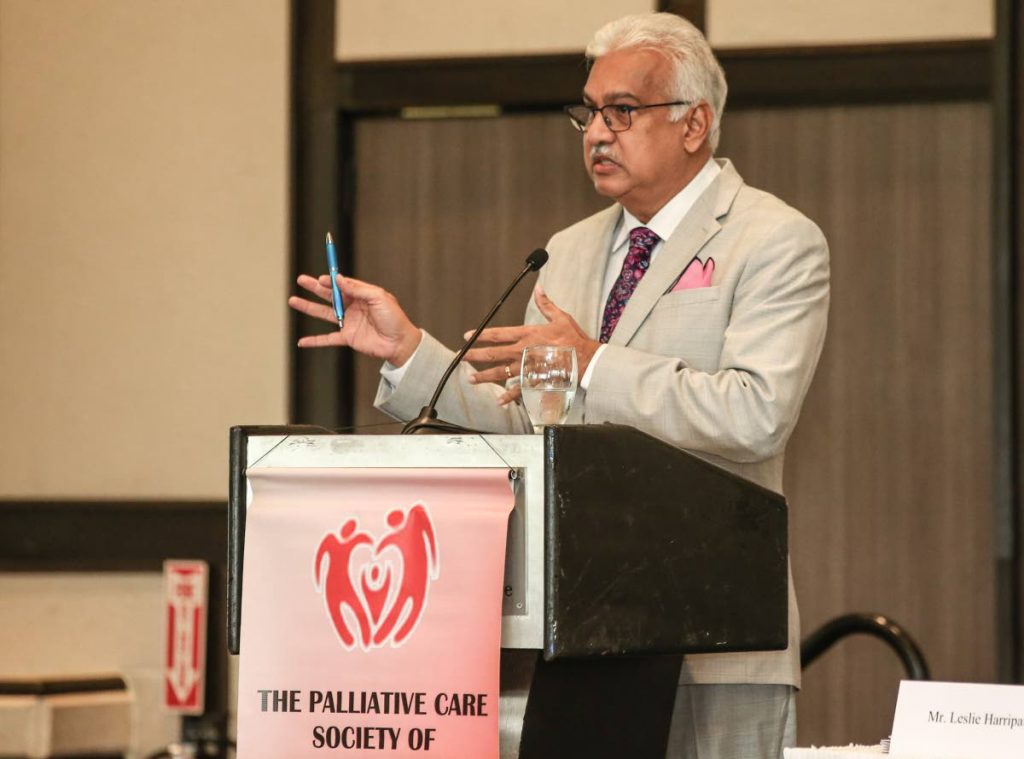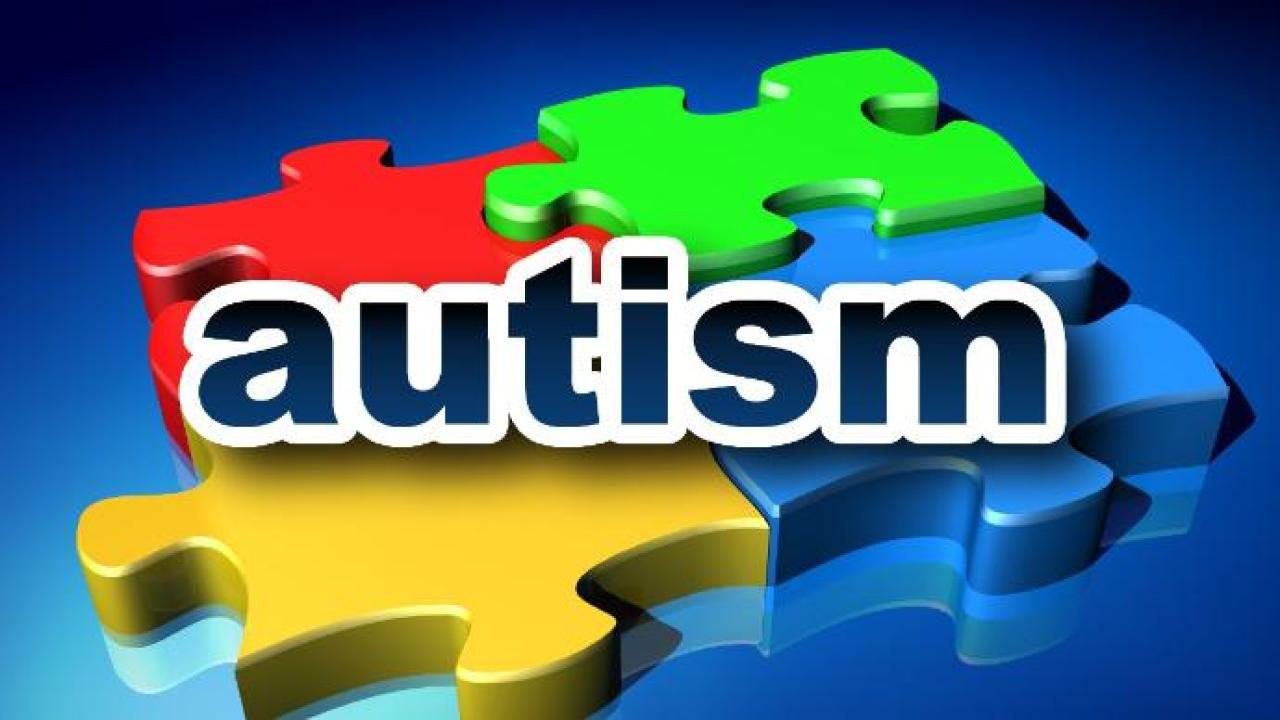 31 Jan 2020
31 Jan 2020
BY: Administrator
Sangre Grande to get palliative care unit
A designated palliative care unit will soon exist in Sangre Grande. The announcement was made on Sunday morning by health minister Terrence Deyalsingh at the 7th Palliative Care Society conference at the Trinidad Hilton, Port of Spain.
According to the society, palliative care refers to the “total care of patients whose disease is not responsive to curative treatment.” It also involves the control and relief of the patients’ pain and psychosocial challenges.
Deyalsingh said the ministry is assessing a possible site location. It will be modelled after the unit at the Caura hospital, which he commended. That unit is a 12-bed in-patient unit which was established in collaboration with the North Central Regional Health Authority.
“I was so touched by how dignified people were facing mortality. None of those patients complained. They were dignified, they were at peace with themselves, they accepted their fate. As a health minister and as a human being, I felt nothing but pride and love at Caura.”
He also said when the construction of the new Sangre Grande hospital is completed, there will be a space at the old hospital to be used specifically as a palliative-care unit.
“Everything should be focused on that person on that bed, that person who is making peace with his maker and should have peace surrounding him, and not the consequential events that go with it.”
He believes palliative care is part of “God’s work” and is a very important factor within the local health care system.
Read more: https://newsday.co.tt/2019/10/06/sangre-grande-to-get-palliative-care-unit/
 31 Jan 2020
31 Jan 2020
BY: Administrator
We need to stop perpetuating the myth that children grow out of autism
Around 1% of the population has an autism spectrum disorder, with estimates ranging from one in 150 to one in 70.
While people differ in the range and severity of their symptoms, common features include difficulties with communication and social interaction, restrictive and repetitive behaviours and interests, and sensory sensitivities.
According to the 2017 Autism in Australia report, autism is most prevalent among children aged five to 14, with 83% of Australians with an autism diagnosis aged under 25.
But while children are more likely to have a diagnosis of autism than adults, this doesn’t mean children “grow out” of autism.
Why are rates higher among children?
There are a number of reasons why the prevalence of autism is higher among school-aged children than adults, starting with the measurement.
“Prevalence” refers to the rate of diagnosis and/or self-reports, not the rate of actually having autism. As autism is a lifelong condition, it’s more likely the rates of actually having autism are stable across adults and children.
Diagnostic techniques and awareness of autism have improved dramatically in recent times. Many autistic adults would not have been given a formal diagnosis, but rather misdiagnosed or just seen as “weird”.
These days, there are clear benefits of having and reporting a diagnosis for school-aged children; including access to funding and educational support. This means parents who suspect their child has autism may seek out a diagnosis when in previous generations they would not.
There are far fewer benefits to having and reporting a diagnosis for adults, and many more barriers, including stigma and discrimination.
Some children lose their diagnosis
Autism is a lifelong condition. However, a small number of studies suggest a minority of children may “lose” their autism diagnosis.
A 2011 analysis of American national survey data found 13% of children diagnosed with autism (187 of the 1,576 whose parents responded to the question) had “lost” their diagnosis.
The most common reason was “new information”, such as being diagnosed with another developmental, learning, emotional, or mental health condition.
Only 21% of the 187 parents reported their child had lost their diagnosis due to treatment or maturation; and only 4% (eight children) had a doctor or other professional confirm the child did not have ASD and did not have any other developmental, learning, emotional, or mental health condition.
A recent study in the Journal of Child Neurology examined the records of 569 children diagnosed with autism between 2003 and 2013. It found 7% (38 of the 569) no longer met the diagnostic criteria.
However, most were diagnosed with another behaviour disorder (such as attention-deficit hyperactivity disorder) or a mental health condition (such as anxiety disorder).
Just three children out of 569 did not “warrant” any alternative diagnosis.
 31 Jan 2020
31 Jan 2020
BY: Administrator
Four Myths of Autism Debunked for Invisible Disabilities Week, Oct 13-19
LANSING, Mich. — Autism Spectrum Disorder (ASD). have heard someone say it or say something like it: “He doesn’t look autistic” or “She seems pretty high functioning.” While intentions may be good, phrases like these can make parents feel misunderstood and alone.
“For parents of children with autism, navigating challenging behaviors in the community can be a difficult, stressful, and sometimes isolating experience,” says Brian Kaminski, MA, BCBA. “They often feel the burden of the perceived judgment of others who are unaware of the challenges they may be currently facing.“
Many causes have awareness days or months, as autism has April. But, what happens the rest of the year when people who don’t understand the spectrum of symptoms and traits of autism come across individuals with autism? The lack of understanding leads to myths about what it means to have autism.
In fact, ASD is a neurological condition characterized by difficulties with social interaction, verbal and nonverbal communication, and emotional control. Because it is a spectrum disorder, each child is affected differently with his or her own unique set of characteristics, abilities, strengths, and challenges.
And while there is a scientifically proven, evidence-based therapy calledApplied Behavior Analysis (ABA) to help those with ASD live more independent, successful lives, there are still hurdles within our society many have to overcome throughout their lives.
In honor of Invisible Disabilities Week, October 13-19, Centria Autism would like to address some common myths about ASD.
Read more: https://www.fox47news.com/news/local-news/four-myths-of-autism-debunked-for-invisible-disabilities-week-oct-13-19
 31 Jan 2020
31 Jan 2020
BY: Administrator
Vaping Death 2019: E-Cigarette Linked To Fatal Lung Disease Of Illinois Patient
The Illinois Department of Public Health confirmed that a patient has died after contracting a serious lung disease following vaping. They said that it is the first case in the United States linked to the smoking substitute that is now popular among teens and adults.
The health officials has not provided other information about the patient, such as the name, age, address or date of death but they said that the person was hospitalized after falling ill from vaping.
About 193 people in 22 states have contracted severe respiratory diseases following vaping according to the Centers for Disease Control and Prevention. The officials said that the root cause of these so-called “potential cases” is yet to be identified and that investigations are still in progress.
Teens and adults who have developed respiratory complications are known to have used electronic cigarettes or other vaping devices ruling out infectious diseases as the reason for causing the illnesses. Doctors said the illness is similar to an inhalation injury wherein the lungs react to a substance triggering the disease.
There were reports of the illnesses since last June and is rapidly increasing partly because cases that weren’t initially linked to vaping are now being associated with it.
Recent addition to the case are two reports from Connecticut, four from Iowa and six from Ohio. Health officials are encouraging doctors and hospitals to notify the state about respiratory diseases that are potentially related to vaping.
 31 Jan 2020
31 Jan 2020
BY: Administrator
Outbreak of Lung Injury Associated with the Use of E-Cigarette, or Vaping, Products
CDC, the U.S. Food and Drug Administration (FDA), state and local health departments, and other clinical and public health partners are investigating a national outbreak of e-cigarette, or vaping, product use-associated lung injury (EVALI).
Read more: https://www.cdc.gov/tobacco/basic_information/e-cigarettes/severe-lung-disease.html
